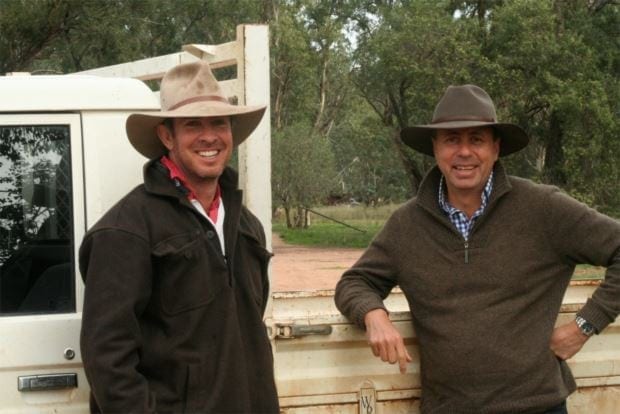
26 Nov Securing Attractive Finance for Farmers
Australian banks have lent in excess of $60,000,000,000 to Australian primary producers. ABARE’s statistics reveal that the interest cost within a farmers business is in the top three expenses, if not the highest. If this is the case when interest rates are low, what will happen to these figures if interest rates increase?
Farmers naturally focus on their operation on a day to day basis and become operational experts. It is their passion, their joy and after all their livelihood. A farmer’s attention to focus on the funding side of the equation perhaps doesn’t attract the application compared to the operational side. This maybe because there exists a knowledge gap on the technical side of banking, or there is insufficient time (or motivation) to apply to it. In addition to the borrowing costs to the business, another area that is constantly overlooked within banking arrangements is the inherent funding risk the loan contract entails.
Funding risk at a base level is the risk that the farmer faces when there is insufficient capital or liquidity in the business to operate the business. It is directly linked to solvency. In reality, funding risk is actually more than just having spare capacity in the overdraft account to run the business, it is being aware of what the banking thresholds are in terms of a bank being able to support a client. Remember banks can call in loans even though a client meets all of their interest commitments.
Being ignorant of these critical thresholds places another layer of risk within a farming business. These discussions are rarely spoken with bank managers given the negative association of the discussion points, yet behind the scenes banks have to adhere to strict process and protocols in accordance to their banking licence mandate. Farming, on the other side is inherently a volatile in terms of seasonal and commodity variations. Marrying these two economic forces together can create uncertain outcomes if not addressed in a strategic manner.
Hence there are two material benefits in focusing on the funding foundation of the business.
- First is to reduce the cost of interest. This can save a business $’00,000 per annum.
- Second, is to reduce and mitigate funding risk.
But how is this achieved?
The first is all about negotiation and leverage, but to do this you need to be a master of the second issue: understanding funding risk from a bank’s perspective. Ascertaining funding risk is understanding how a bank measures a farming business’ credit profile. Once mastered, it is then also knowing how to present your business to the bank.
Information is knowledge and knowledge is leverage. It all starts at ground zero. Having good financial control and measurement systems within your business should be the primary focus. Solid reporting procedures include timely, accurate and relevant data being available. Three way reporting is ideal. Cash flow budgets, profit and loss and balance sheet analysis is a banker’s nirvana. Budgets have to reflect commercially achievable outcomes. This is the base line and starting point.
Second, know your bank’s business. Learn and educate what the banks look for when they credit profile a client. It goes well beyond in just providing them financials, a cash flow budget and balance sheet. Every business is unique and all elements of risk assessment need to be addressed. Industry risk, commodity price risk, key man risk, management risk, operational risk, geographic risk, seasonal risk, counterparty risk… the list goes on. Financial ratio analysis and feasibility / sensitivity analysis also plays a major part. Not addressing this elementary criteria can be perceived as management not understanding or addressing risk within the business. The credit profile will be compromised accordingly.
Negotiating your banking platform with your bank has two important factors for consideration. First is to recognise and accept what the bank’s mandate is when operating commercially with clients. It is the bank’s prerogative to maximise their revenue out of every client interaction (as much as the market or the client will allow) in accordance to the credit profile of the client. Their activity is in the shareholder’s interests, not the clients, to sell certain products at certain prices. Banks have very large balance sheets with very large marketing budgets so knowing what is best for your business and how to achieve it can be very opaque at the best of times.
The second consideration is knowing when to present your business to the bank. Each business goes through certain business cycles; growth / consolidation / succession / integration etc. It is about ensuring that a business presents itself only when it is bank fit to maximise the outcome. This sets the benchmark for your credit profile which goes on file. If the timing has been ill considered, it can create a perception that your business does not qualify for optimal pricing and structuring or even approval.
A farmer cannot be everything to everyone. Recognise where the knowledge gaps are and externally source the expertise. Build your management team around this concept. The returns on this investment can be very material and tangible. In addition, external advice can accelerate knowledge and understanding of the banking system to ensure wealth creation is maintained and not put at risk.
It is your business to enjoy. Sleep well at night knowing that it is protected!



Sorry, the comment form is closed at this time.